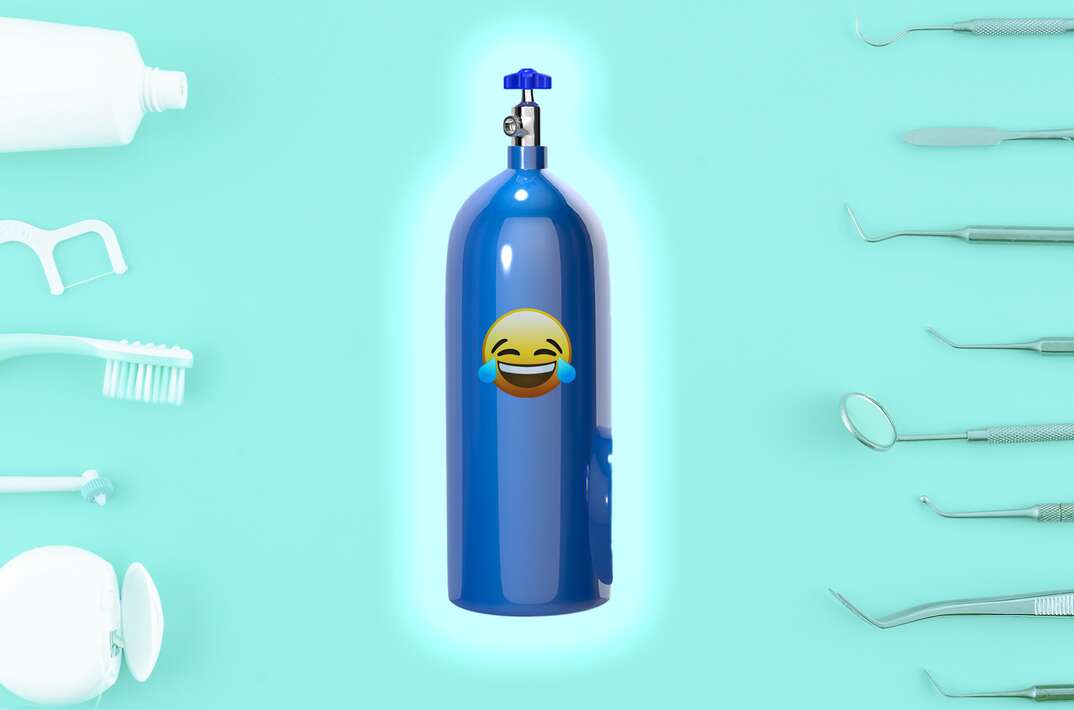Ever Ha-Ha-Had 'Laughing Gas' at the Dentist? Here's What to Expect...

Dental procedures are rarely laughing matters, but occasionally, your dentist may offer you laughing gas as a way to help you calm down while they work. Despite the fun name, laughing gas won’t really give you the giggles. Understanding what it is and how it actually works can help ease your worries if you're headed to the dentist soon.
What Is Laughing Gas?
Laughing gas is another name for nitrous oxide, a colorless gas used as a sedative in medical and dental settings. Dentists use it for both children and adults. It helps you relax and helps to manage pain, but it won't put you to sleep like anesthesia for a surgical procedure. You can still understand what's happening, follow instructions and answer any questions your dentist might ask.
The gas is mixed with oxygen and flows through a mask that goes over your nose, allowing you to inhale it for easy administration. You just need to breathe normally to start feeling the effects of the sedative gas. Its effects are similar to opioids and benzodiazepines — it interacts with the neurotransmitters and receptors in your brain to make you feel less pain while making you feel more relaxed. Your dentist can adjust the amount of laughing gas you receive to ensure you feel less pain without feeling overly drowsy or nauseous.
Dentists use laughing gas for various in-office procedures, including fillings, tooth extractions and root canals. You might receive it if you're having a lengthy, complex or painful procedure. It's often used for children who are anxious about dental procedures.
Adults with dental anxiety might also receive nitrous oxide for all types of procedures, even something as simple as routine exams, to help ease their fears and make them more comfortable. It can be used if local anesthesia doesn't work well for a patient, if you have special needs or if your gag reflex often interferes with routine dental procedures.
However, some people shouldn't use it. While pregnant women might be able to receive laughing gas, you shouldn't have it during your first trimester. Other risk factors include mental health conditions, a history of substance abuse, vitamin B-12 deficiencies and some respiratory conditions. Always let your dentist know if you have any health conditions that could be an issue.
What Are the Effects of Laughing Gas?
You'll usually start to feel the effects of nitrous oxide fairly quickly — often within a few minutes. You'll likely notice yourself feeling very relaxed. Some people start to feel happy or have a sense of euphoria. You could feel light-headed or experience mild hallucinations. Some people feel the effects in their extremities, with their limbs feeling heavy or tingly.
It's possible to have some lingering side effects after receiving laughing gas. Some people experience nausea, shivering, sweating, vomiting, sleepiness or headaches after the procedure. Avoiding heavy meals before the procedure could help prevent nausea or vomiting. Receiving oxygen after laughing gas can help prevent headaches and help get rid of the gas faster to speed up your return to normal. It's generally considered a safe option with no long-term effects when administered by a medical professional.
How Long Does It Take Laughing Gas to Wear Off?
Laughing gas typically only lasts while your dentist administers it. The sensations you feel usually start to fade within minutes once your dentist stops administering the laughing gas. You might notice a lag in your motor skills or concentration for 15 minutes or longer, so plan for a little time before you drive yourself anywhere after your appointment.
Elocal Editorial Content is for educational and entertainment purposes only. The information provided on this site is not medical advice. Editorial Content is not intended to be used for diagnosis or treatment. We are not physicians or a substitute for advice from a physician. The opinions, beliefs and viewpoints expressed by the eLocal Editorial Team and other third-party content providers do not necessarily reflect the opinions, beliefs and viewpoints of eLocal or its affiliate companies. Use of the Blog is subject to the
Website Terms and Conditions.The eLocal Editorial Team operates independently of eLocal USA's marketing and sales decisions.



